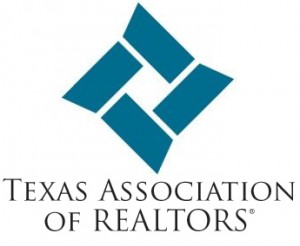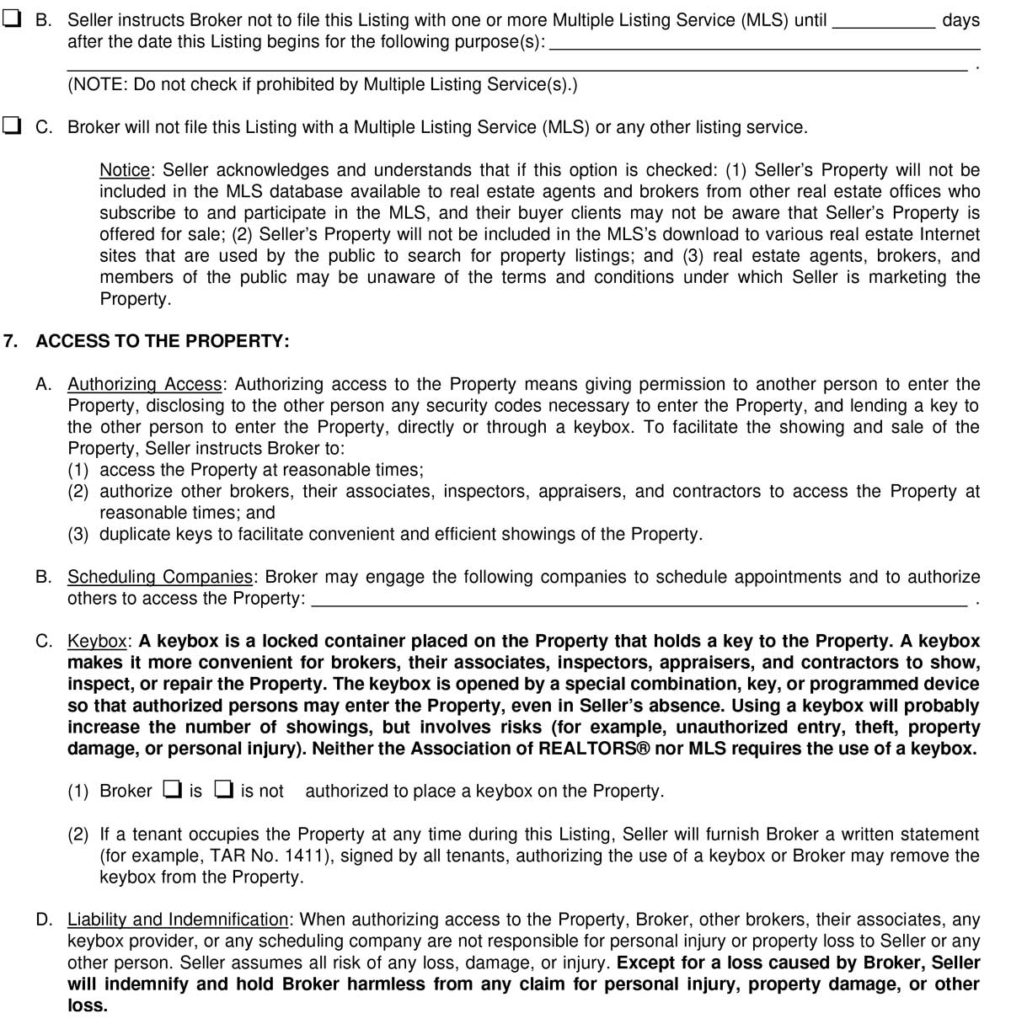
 Note: The Texas Association of Realtors and TREC update promulgated forms regularly. For the most recent updates, check with TAR, TREC, or contact me at brian@starpointerealty.com.
Note: The Texas Association of Realtors and TREC update promulgated forms regularly. For the most recent updates, check with TAR, TREC, or contact me at brian@starpointerealty.com.
Note: I am a real estate professional, not a lawyer. Nothing herein should be construed as legal advice or instructions.
Takeaways
- Paragraph 6 authorizes the listing agent to put the home on the MLS.
- Paragraph 7 authorizes Realtors to access the property and use a keybox or scheduling company to do so.
- Making your home as accessible to buyers as possible is critical to getting it sold.
Previously, we discussed the listing price, term and commission, some of the most important parts of the listing agreement. Now we move on to more about what that listing agreement means, and in particular what the seller authorizes their agent and other agents to do to get the home sold.
These two paragraphs are all about exposure – getting your home marketed on the MLS – and accessibility – making it possible for buyers to see your home. It is a good idea to get your listing on the MLS (only when 100% ready!) and also have a keybox. The point of all the marketing you’ll be doing is to get foot traffic, and you can’t get foot traffic if you turn people away at the door.
Paragraph 6. This paragraph gives the Realtor both permission and instructions to list and advertise your home on the MLS.
Most often, I think Realtors check box A. This gives them 5 days (3 days in the Fort Hood Area) from the start date of the listing to get the property into the MLS. That seems like more than enough time, right? Probably, but also consider that there may be a lot still to do before your home is ready to be marketed! For example, there may be repairs, new carpets, professional cleanings, lawn mowings and professional pictures to schedule. You want to be sure your home is completely ready for the MLS before it goes live. You don’t want it on the MLS with just one exterior photo for a week while you are getting things ready.
If you know there are reasons you aren’t quite ready to go on the MLS yet, the easiest thing is to just start the listing term later. But alternatively, you can check box B and specify when or under what conditions approximately you think the home will be ready to hit the MLS. I use this occasionally, specifying that I will upload a listing to the MLS as soon as the professional photography is complete.
And why might someone check box C? Why wouldn’t a seller want their home listed on the MLS? I don’t know. It might be a privacy thing? But that is an option if you are allergic to the MLS. It even comes with a huge disclaimer in the contract ensuring that you know what you’re doing before you select this option.
Paragraph 7. Access to the Property. This part of the paragraph all relates to the “A” in the PACE home selling strategy: Accessibility. It gives the Realtor permission to use a lockbox and showing service, for example.
Paragraph 7.A. This paragraph gives your Realtor and other Realtors permission to access your property. They are not trespassing. Your agent can (and probably should) make duplicate keys. It also mentions others professionals, like inspectors. Get ready, because once you have a buyer, you are contractually obligated to allow the buyer’s licensed inspectors to access the home and conduct inspections.
Paragraph 7.B. If your agent uses a scheduling company, this is where they would note it, giving that scheduling company authorization to show your home. A scheduling company is a 24/7 service that takes calls from Realtors wanting to make an appointment to see your home. They then call, the seller, during business hours to coordinate it. This is more efficient than relying on your listing agent to field every call. Your agent may be busy, and a prompt response to requests for viewings helps. They also track the showings and solicit feedback from the agents. I use ShowingTime for my scheduling service, for example. In San Antonio, every Realtor gets access to Centralized Showing Services which they pay for through the board of Realtors.
Paragraph 7.C. This paragraph authorizes your agent to put a keybox on the property. You have the option to decline, but I of course recommend it. The Fort Hood Area Association of Realtors has a Supra electronic keybox that allows every agent to access the keybox with an app on their phones. This is the keybox you should use – not a combo keybox from Home Depot – because it is the most convenient for local Realtors to use and get into your home.
There may be reasons you decline to permit a keybox, but strongly consider it and remember how important accessibility is to getting your home sold.
There is a separate TAR form for homes with tenants authorizing a keybox. For tenant occupied homes without keyboxes, often either the listing agent will be present for every showing, or the buyer’s agent will get keys from the listing agent’s office ahead of time.
Paragraph 7.D. The real estate agent is not responsible if someone steals your belongings during a showing, or accidentally breaks something in the home. This is why it is important that you secure valuables before hitting the market, including keeping the home tidy and free of breakable or special items to you. You are moving! I recommend securing jewelry and the like somewhere outside the home, and packing things like vases, pictures and art in boxes in the garage.
This should be easy stuff. Next we discuss “Cooperation” with other brokers – how it works with buyer’s agents.
If you have questions about these paragraphs, or a home to sell in the Fort Hood area, contact me at (512) 763-7912 or brian@starpointerealty.com!


